Related Research Articles
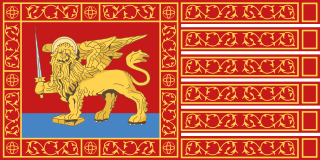
The Republic of Venice, officially the Most Serene Republic of Venice and traditionally known as La Serenìssima, was a sovereign state and maritime republic with its capital in Venice. Founded, according to tradition, in 697 by Paolo Lucio Anafesto, over the course of its 1,100 years of history it established itself as one of the major European commercial and naval powers. Initially extended in the Dogado area, during its history it annexed a large part of Northeast Italy, Istria, Dalmatia, the coasts of present-day Montenegro and Albania as well as numerous islands in the Adriatic and eastern Ionian seas. At the height of its expansion, between the 13th and 16th centuries, it also governed the Peloponnese, Crete and Cyprus, most of the Greek islands, as well as several cities and ports in the eastern Mediterranean.

Mazzorbo is one of various islands in the northern part of the Lagoon of Venice. Like the other islands in this part of the lagoon, it was the site of one of the earliest settlements in the lagoon which predated the development of Venice. However, these islands then declined and were eventually abandoned. In the 1980s the architect Giancarlo De Carlo built a brightly coloured residential neighbourhood to help to repopulate Mazzorbo. In 2019 its population was 256. It is linked to Burano by a wooden bridge. It was once an important trading centre but is now known for its vineyards and orchards. Its main attraction is the fourteenth century church of Santa Caterina.

Giovanni Domenico Nardo was an Italian naturalist from Venice, although he spent most of his life in Chioggia, home port of the biggest fishing flotilla of the Adriatic. He learned taxidermy and specimen preparation from his uncle, an abbot. He went in a high school in Udine and studied medicine in Padua, where he reorganized the zoological collections. In 1832 he reorganized the invertebrate collection at the Imperial Natural History Museum in Vienna and in 1840 he became Fellow of the Istituto Veneto di Scienze, Lettere ed Arti, an academy whose aim is "to increase, promulgate, and safeguard the sciences, literature and the arts". Nardo wrote hundreds of scientific publications ranging from medicine and social sciences, philology, technology, physics, but mostly on Venetian and Adriatic zoology. In marine biology, Nardo wrote on algae, marine invertebrates, fishes and sea turtles. A vast collection of his manuscripts and his personal library is preserved in the Natural History Museum of Venice.
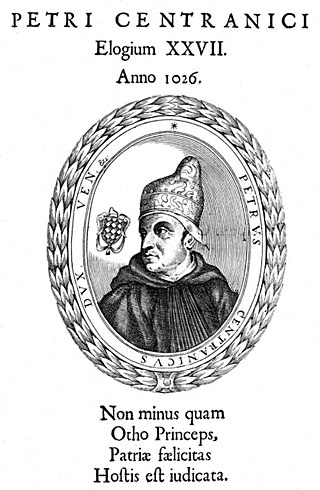
Pietro Barbolano was the 28th Doge of Venice. Reportedly a descendant of the legendary Eraclea, he was elected by the assembly of the nobles after the deposition of his predecessor, Otto Orseolo. The dates of his birth and death are unknown.
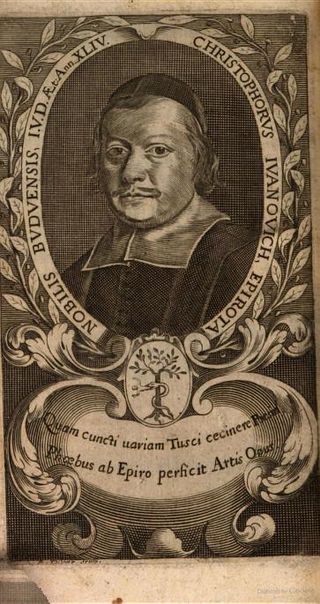
Cristoforo Ivanovich (1628–1689) was the first historian of Venetian opera, who also wrote several librettos of his own.
Michelangelo Morlaiter was an Italian painter, active mainly in Venice. He was one of the founding members and professor of the Accademia di Scoltura, Pittura, ed Architettura Civile in Venice in 1766.

Gaetano Cozzi was an Italian historian, professor at Padua University, and researcher with the Giorgio Cini Foundation and Fondazione Benetton Studi e Ricerche. He was a specialist in Venetian history, with special attention to the institutions, the relationship between law and society and the cultural environment.

The Venetian navy was the navy of the Venetian Republic which played an important role in the history of the republic and the Mediterranean world. It was the premier navy in the Mediterranean Sea for many centuries between the medieval and early modern periods, providing Venice with control and influence over trade and politics far in excess of the republic's size and population. It was one of the first navies to mount gunpowder weapons aboard ships, and through an organised system of naval dockyards, armouries and chandlers was able to continually keep ships at sea and rapidly replace losses. The Venetian Arsenal was one of the greatest concentrations of industrial capacity prior to the Industrial Revolution and responsible for the bulk of the republic's naval power.
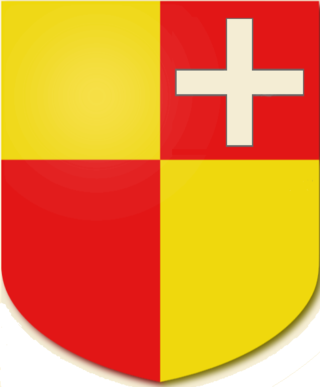
The Calbo family later on Calbo-Crotta is an Italian noble mercantile family originating from Padua and then established in Venice starting the year 891. It became part of the Great Council of Venice after the battle of Genoa in 1310. They were given nobility title in 1817 and were part of Venetian nobility.
The Captain of the Gulf was a senior naval command of the Republic of Venice.

Galeas per montes is the name given to a feat of military engineering made between December 1438 and April 1439 by the Republic of Venice, when several Venetian ships, including galleys and frigates were transported from the Adriatic Sea to Lake Garda. The operation required towing the ships upstream on the river Adige until Rovereto, then transporting the fleet by land to Torbole, on the Northern shores of the lake. The second leg of the journey was the most remarkable achievement, requiring a land journey 20 km through the Loppio Lake and the narrow Passo San Giovanni.

The Magistrato alla Sanità was the office of the Republic of Venice definitively instituted in 1490 to manage public health in the city of Venice and its territories, with specific attention on preventing the spread of epidemics within the maritime republic. The magistracy was among the first health authorities in Europe to institute public inoculation projects to prevent the spread of infectious diseases.

Minerva between Geometry and Arithmetic is a fresco fragment, usually attributed to Paolo Veronese, from 1550, but by some art historians to Anselmo Canera or Giambattista Zelotti. It was painted for the Palazzo de Soranzi in Castelfranco Veneto but is now in the Palazzo Balbi, in Venice.
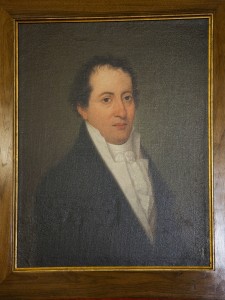
Vittorio Barzoni was an Italian author, mainly of anti-Napoleonic tracts during the French occupation of Northern Italy.

The Riformatori dello studio di Padova, also Riformatori allo studio di Padova, were the three officials of the Venetian Republic responsible for overseeing education and culture. Created in 1517, initially to reopen the University of Padua after the War of the League of Cambrai, they became responsible over time for public and private schooling at all levels, public libraries in Venice and Padua, intellectual academies, and professional schools. They also reviewed and authorized for publication all books within the mainland territory of Venice.
The Venetian Inquisition, formally the Holy Office, was the tribunal established jointly by the Venetian government and the Catholic Church to repress heresy throughout the Republic of Venice. The inquisition also intervened in cases of sacrilege, apostasy, prohibited books, superstition, and witchcraft. It was established in the 16th-century and was abolished in 1797.
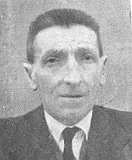
Roberto Cessi was an Italian historian and politician, specializing in Venetian history.
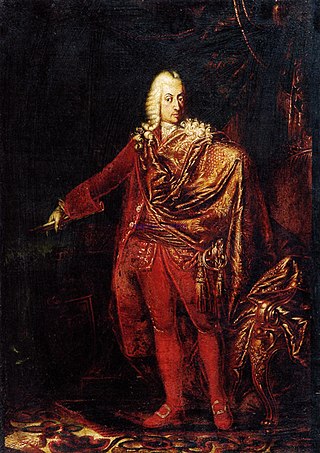
Carlo Aurelio Widmann was a Venetian patrician, naval officer, and the last Provveditore Generale da Mar of the Venetian overseas empire, from 1794 to the Fall of the Republic of Venice in 1797.
Guglielmo Berchet was an Italian patriot and historian. With regards to the latter, most of his works were related to the history of Venice.
The cinque savi alla mercanzia was a magistracy of the Republic of Venice responsible for the oversight of trade and manufacturing.
References
- ↑ Viggiano, Alfredo. "Giustizia, disciplina e ordine pubblico". Enciclopedia Italiana. Archived from the original on 23 August 2021. Retrieved 23 August 2021.
- ↑ Tentori, Cristoforo (1787). Saggio sulla storia civile, politica, ecclesiastica, e sulla corografia e topografia degli stati della Repubblica di Venezia... dell'ab. D. Cristoforo Tentori,... Volume 8. Giacomo Storti. p. 289.
- ↑ Witcombe, Christopher L. C. E. (2004). Copyright in the Renaissance Prints and the Privilegio in Sixteenth-century Venice and Rome. Brill. p. xxii. ISBN 9789004137486.
- ↑ Pastore, Alessandro (1998). Il medico in tribunale la perizia medica nella procedura penale d'antico regime (secoli XVI-XVIII). Casagrande. p. 162. ISBN 9788877132680.
- ↑ Cappelletti, Giuseppe (1835). Storia della repubblica di Venezia dal suo principio sino al giorno d'oggi Volume 10. G. Antenelli. p. 374.
